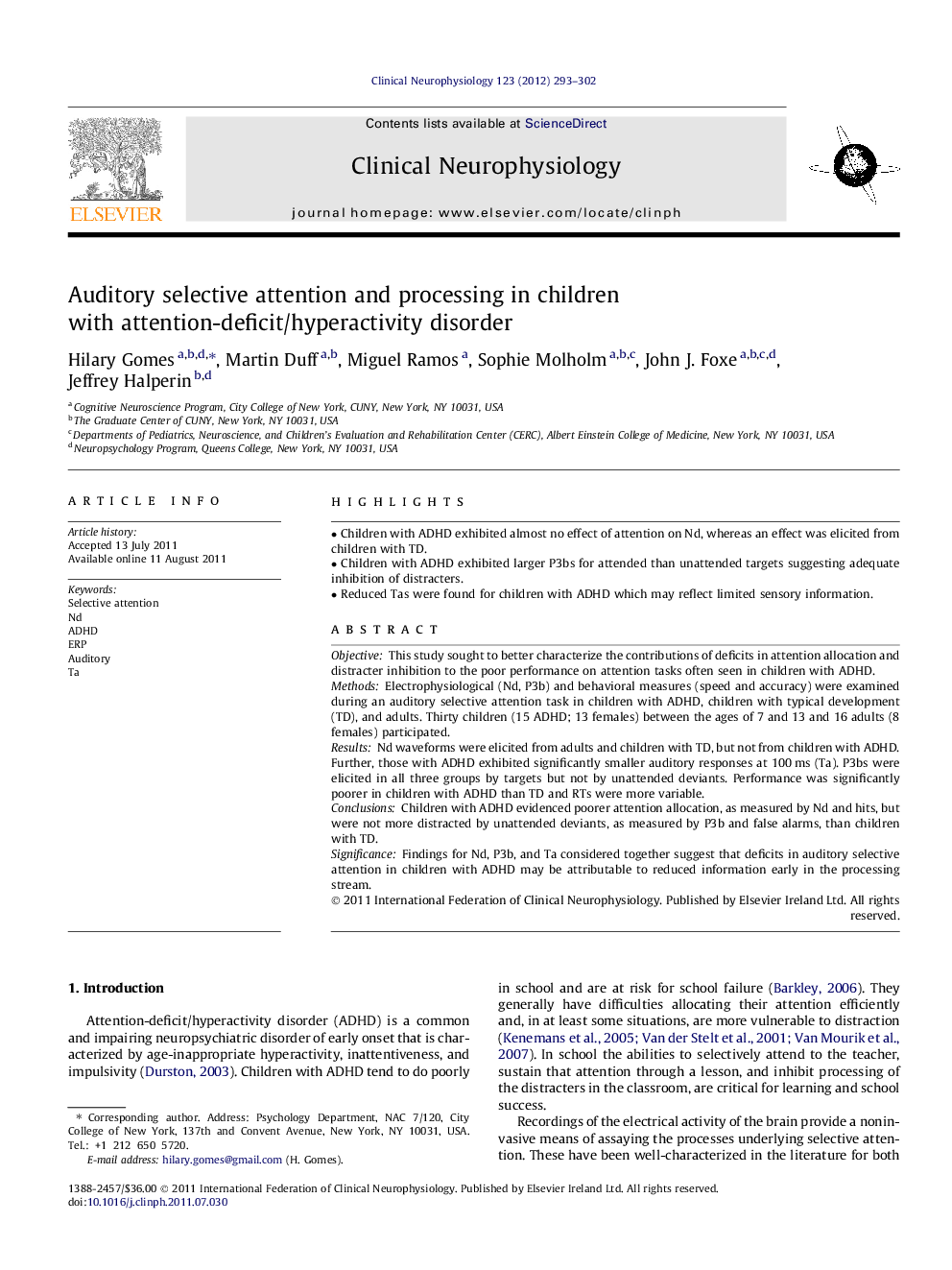| Article ID | Journal | Published Year | Pages | File Type |
|---|---|---|---|---|
| 3045627 | Clinical Neurophysiology | 2012 | 10 Pages |
ObjectiveThis study sought to better characterize the contributions of deficits in attention allocation and distracter inhibition to the poor performance on attention tasks often seen in children with ADHD.MethodsElectrophysiological (Nd, P3b) and behavioral measures (speed and accuracy) were examined during an auditory selective attention task in children with ADHD, children with typical development (TD), and adults. Thirty children (15 ADHD; 13 females) between the ages of 7 and 13 and 16 adults (8 females) participated.ResultsNd waveforms were elicited from adults and children with TD, but not from children with ADHD. Further, those with ADHD exhibited significantly smaller auditory responses at 100 ms (Ta). P3bs were elicited in all three groups by targets but not by unattended deviants. Performance was significantly poorer in children with ADHD than TD and RTs were more variable.ConclusionsChildren with ADHD evidenced poorer attention allocation, as measured by Nd and hits, but were not more distracted by unattended deviants, as measured by P3b and false alarms, than children with TD.SignificanceFindings for Nd, P3b, and Ta considered together suggest that deficits in auditory selective attention in children with ADHD may be attributable to reduced information early in the processing stream.
► Children with ADHD exhibited almost no effect of attention on Nd, whereas an effect was elicited from children with TD. ► Children with ADHD exhibited larger P3bs for attended than unattended targets suggesting adequate inhibition of distracters. ► Reduced Tas were found for children with ADHD which may reflect limited sensory information.
